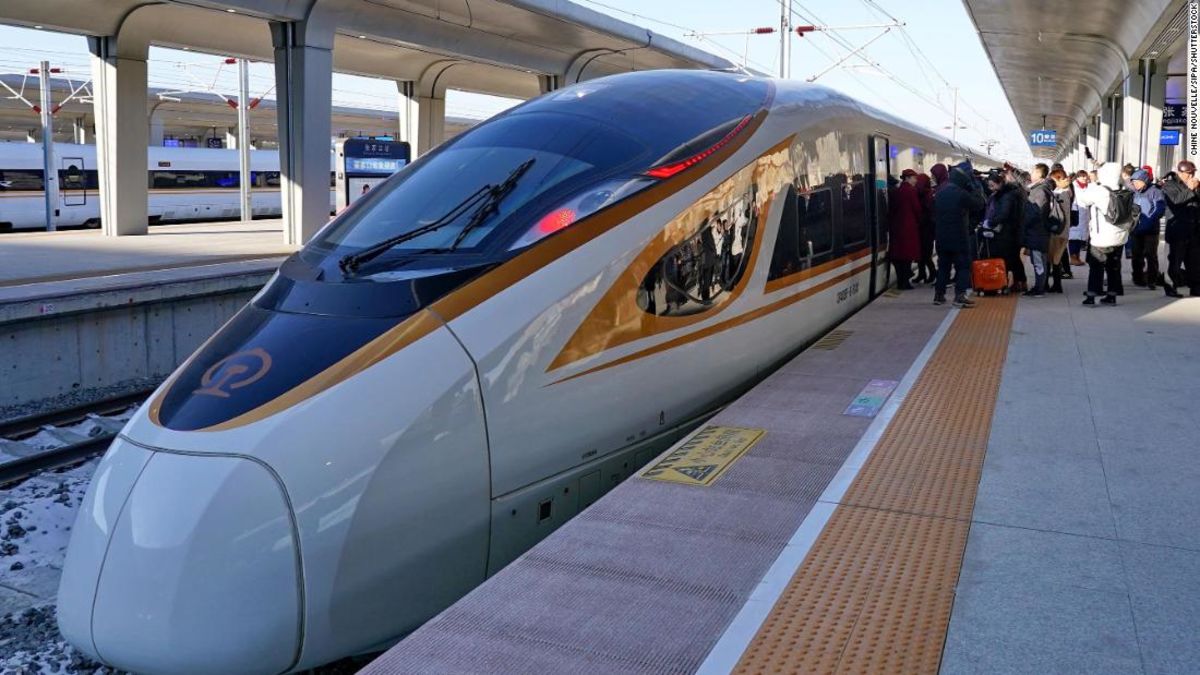Products You May Like
But this isn’t just another bullet train.
Taking about four years to build, the line, also referred to as the Jing-Zhang high-speed railway, connects Beijing, Yanqing and Zhangjiakou, all three of which will host events during the upcoming Winter Olympics.
The route will stop at 10 stations, including Badaling Chang Cheng, the most popular section of China’s Great Wall.
Chongli railway, a branch line from the Jing-Zhang railway, is also open and will ferry passengers from the capital city to Taizicheng Station — a stone’s throw away from several skiing competition venues and the Olympic Village.
In the 1980s, Dong Yao-hui was part of the first three-man team to walk the entire length of China’s Great Wall. Today, he’s focused on its preservation.
Just how smart is this new train?
The new rail line began operations on December 30, with the first train running from Beijing North Railway Station to Taizicheng Railway Station.
Tickets range from RMB77 ($11) to RMB231($33) for a normal high-speed train and RMB90 ($12) to RMB270 ($38) if you’re traveling on a smart train.
At the time of writing, tickets for the smart trains need to be booked two days in advance.
So what makes them “smart?” Well, the carriages are equipped with 5G signals, intelligent lighting and 2,718 sensors to collect real-time data and detect any operational abnormalities.
Meanwhile, each individual seat has its own touch-screen control panel and wireless charging docks.
Though the high-speed trains on the route are autonomous, a monitoring driver will be on board at all times. The trains can automatically start, stop and adjust to the different speed limits between stations.
Back at the station, robots and facial recognition technologies have been deployed to help passengers with directions, luggage and paperless check-ins.
Getting ready for the 2020 Winter Olympics
The trains’ interiors have been designed with the needs of athletes and journalists in mind, too.
Some cabins feature larger storage areas for winter sports equipment, which can be accessed by QR code. Special storage spaces have also been created to house athletes’ stimulant test samples.
The dining car can reportedly be converted into a media center during the Olympics, with adjustable seats and tables making it easier on journalists traveling with lots of equipment. The car will also offer a live-broadcast service and charging outlets underneath each table.
Car Four features removable seats, which will make it easier for passengers traveling with wheelchairs during the 2022 Winter Paralympics.
The first China-built railway
Chinese railway enthusiasts are excited about the new route for another historical reason.
Jing-Zhang Railway was originally the name of a now-defunct line. First opened in 1909, it was the first railway designed and built independently by Chinese, linking Beijing and Zhangjiakou.
Traveling along the entire route back then took eight hours.
The line’s few remaining original stations closed in 2016 to make way for the construction of the new high-speed railway.
Running at the top speed of 431 kph, the train links Shanghai Pudong Airport and Longyang Road in the eastern side of Shanghai.

